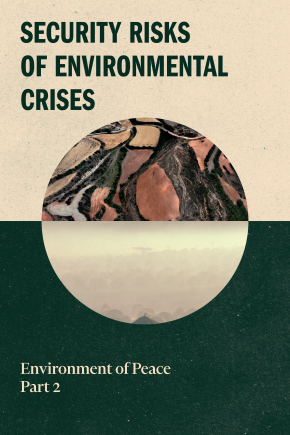Security Risks of Environmental Crises: Environment of Peace (Part 2)

SIPRI’s Environment of Peace initiative focuses on managing the risks that are created by two interwoven crises: the darkening security horizon and the immense pressures being placed on the natural world and the systems that support life on earth.
The Environment of Peace research report is an in-depth look at the evidence base and analysis of the policy report Environment of Peace: Security in a New Era of Risk, including many real-world case studies. The report is the result of two years’ work by more than 30 researchers, led and guided by some of the leading voices in the fields of environment and security.
Accessibly designed, the new research report is available to download in four parts: Elements of a Planetary Emergency (part 1); Security Risks of Environmental Crises (part 2); Navigating a Just and Peaceful Transition (part 3); and Enabling an Environment of Peace (part 4).
This part—Security Risks of Environmental Crises (part 2)—shows how combinations of environmental and security phenomena are generating complex risks. Through a theoretical framework informed by the literature, Cedric de Coning, Research Professor at the Norwegian Institute of International Affairs (NUPI), and his team explore different pathways from environmental stress to conflict and how the darkening security horizon and environmental crises are interacting to generate different types of risk: compound, cascading, emergent, systemic and existential. The analysis is supported by numerous case studies, spanning a variety of social-ecological systems and different types of risks. Part 2 also discusses options for responding to these complex risks.
Read a separate annex that assembles a number of in-depth case studies and other input papers that were commissioned to inform the research and analysis in part 2 here.
Read the overview to the four-part research report here.
Read Elements of a Planetary Emergency (part 1), which lays out the conceptual and evidential landscape for Environment of Peace, here.
Read Navigating a Just and Peaceful Transition (part 3), which focuses on needed transitions towards sustainability and climate resilience, here.
Read Enabling an Environment of Peace (part 4), which examines the legal and institutional landscape within which the twin crises—and humanity’s responses to them—play out, here.
Read the policy report Environment of Peace: Security in a New Era of Risk here.





